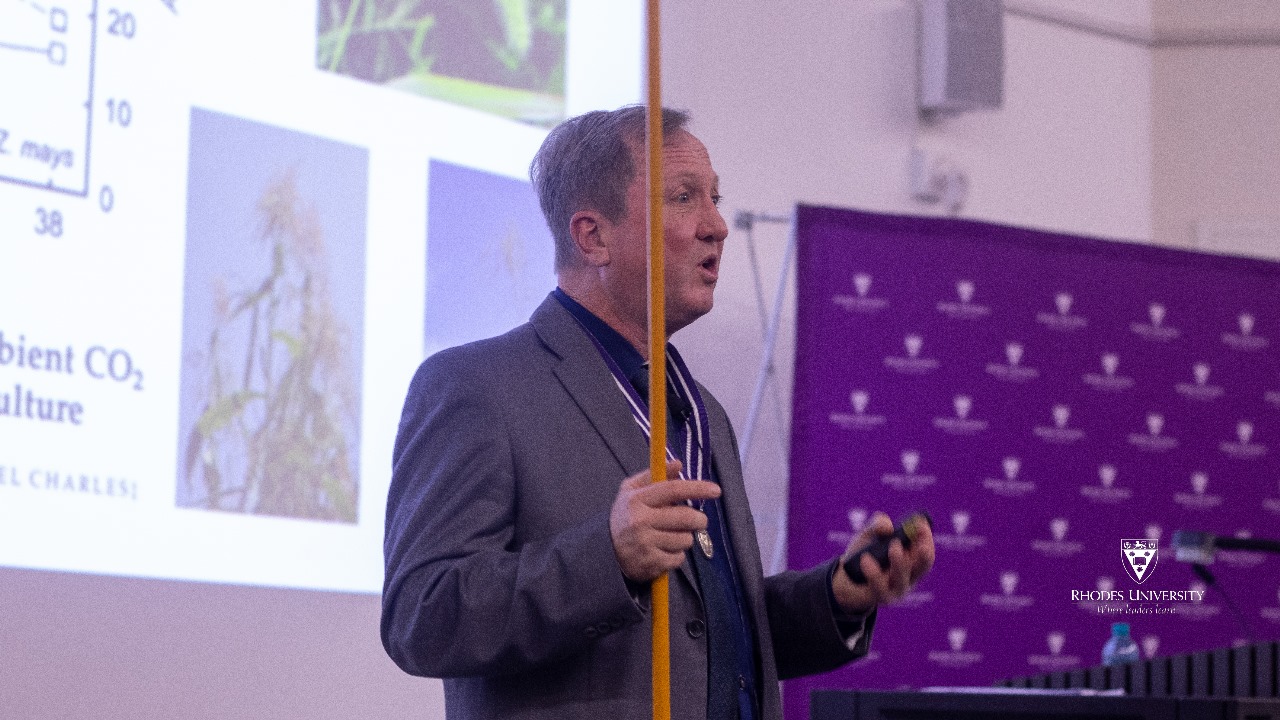
Africa's savannas look the way they do all thanks to a tiny, ancient flaw in a plant enzyme called Rubisco. This enzyme is key to a plant's ability to turn sunlight into food. But for most of Earth's history, a high atmospheric carbon dioxide (CO₂) level meant this flaw did not matter. Then, millions of years ago, CO₂ levels dropped, and the flaw became a big problem, making a process called C₃ photosynthesis super inefficient.
In response, some plants, like grasses, evolved a new, more efficient way of doing things: C₄ photosynthesis. This innovation helped create the iconic savannas we see today, with their mix of grasses and trees. This is also why many of Africa's most important crops—like maize and sorghum—are C₄ plants, making them excellent at handling hot, dry conditions.
Today, thanks to fossil fuels, atmospheric CO₂ is back up to levels not seen in 3 million years. This changes the game, potentially shifting the balance between grasses and trees in these famous landscapes. It also has enormous implications for crop production and food security.
At this year’s Rhodes University graduation ceremony, Professor Brad Ripley, a leading plant ecophysiologist, was honoured with the Vice-Chancellor’s Distinguished Senior Researcher Award – a prestigious award the institution offers. The award recognises his groundbreaking work on how plants respond to a changing climate, with a particular focus on elevated atmospheric CO₂ levels.
Professor Ripley’s research is more than academic; it is a lifeline for understanding how Southern Africa’s ecosystems – especially savannas are transforming under climate stress. “One of the most important ecosystems in Southern Africa is the savannas,” Ripley explained. “And savannas are very affected by climate change”. Throughout his career, Ripley has explored how rising CO₂ levels influence the physiology of C₃ and C₄ grasses, trigger woody thickening in savanna systems, and alter the behaviour of invasive plant species. He says, “When I had the opportunity to go into this research area, I did.”
Indeed, collaboration lies at the heart of Ripley’s success. “I like the collaborative part of it,” he said, smiling. His research has connected him with researchers both locally and internationally, reinforcing Rhodes University’s reputation as a hub for innovative environmental science.
“My work was the justification,” Ripley said, reflecting on the significance of receiving the Vice-Chancellor’s award. “A long career of hard effort, fundraising, designing research, developing collaboration, building facilities... that’s rewarding.”
Juggling the demands of his research and teaching is no easy task, but Ripley embraces it with enthusiasm and passion. “We research because we love it!” he declared enthusiastically, showing that passion is as crucial as precision in pursuing scientific excellence.
The Vice-Chancellor’s Distinguished Senior Researcher Award is reserved for scholars who consistently produce high-quality, influential research, and Ripley’s work checks every box. With this recognition, Rhodes University celebrates not just an individual achievement but a powerful testament to the role of research in shaping a more sustainable future.
--------------------------
Title: How Climate Change—Past and Future—Shaped Africa’s Landscapes and Crop Production Largely Due to a Flaw in the Most Important Enzyme on Earth.
Short Abstract:
Plants convert atmospheric CO₂ into sugars using energy from sunlight. A central step, catalysed by the enzyme Rubisco, combines CO₂ with a 5-carbon substrate to form a 3-carbon sugar precursor—a process known as C₃ photosynthesis. However, Rubisco can also react mistakenly with O₂, triggering photorespiration, a wasteful process. For most of Earth’s history, abundant CO₂ made this flaw irrelevant. But during the Oligocene and Miocene, falling CO₂ and rising O₂ made C₃ photosynthesis inefficient. In response, some plants—especially grasses—evolved the more efficient C₄ photosynthetic pathway, which reduces photorespiration and thrives in hot, low-CO₂ environments. This innovation helped drive the expansion of savannas, where grasses and trees coexist in dynamic competition, shaped by fire, drought, and grazing. It also determined that the most efficient crops in Africa like maize and sorghum were C4. Today, fossil fuel emissions have pushed atmospheric CO₂ back to levels last seen 3 million years ago, once again increasing the efficiency of C₃ photosynthesis and potentially shifting the balance in these iconic African landscapes and altering food production. This lecture highlights the contributions of Professor Ripley and the Rhodes University Elevated CO₂ Facility (RUECF) in advancing our understanding of these critical plant–atmosphere interactions—drawing lessons from the past while exploring the future of African ecosystems and crops.
